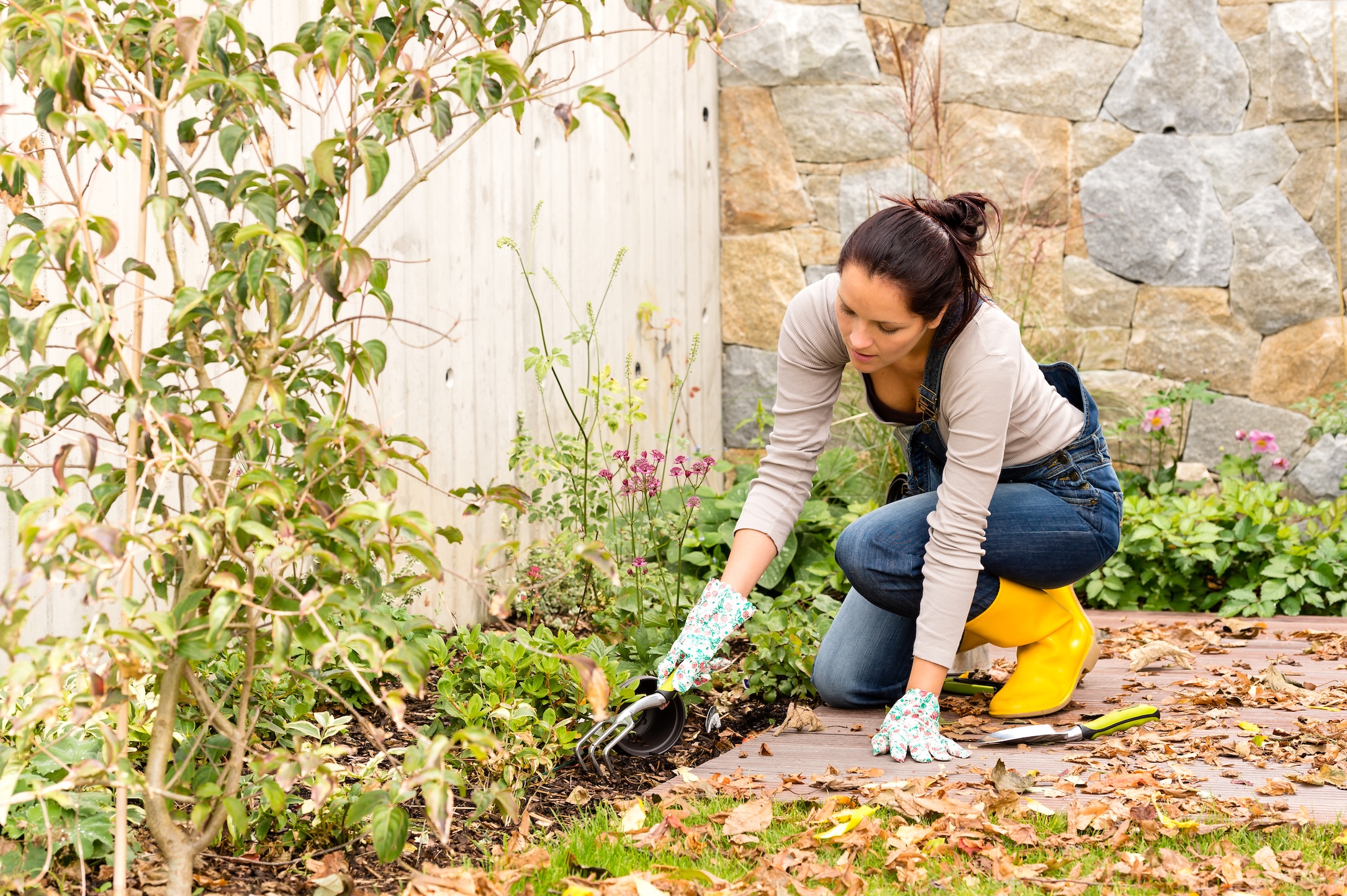Keeping Your Garden Clean and Healthy in The Fall
When we get later into the summer, the time comes for gardeners to start to look forward to autumn and the colder months that will be coming. Learn all the ways you can set up your garden for fall success when it comes to cleanup and preparation that will get you through the changing seasons.

It's August, and hopefully, your garden is producing a bountiful harvest and still going strong. It's the perfect time to make sure your plot stays healthy and to begin preparation for fall. This is the time of year when diseases show up in the vegetable garden.
August Garden Cleanup Checklist
- Inspect your tomato plants, checking the lower leaves for yellowing or brown spots. These could be signs of early blight or Septoria leaf spot.
- To prevent diseases from spreading, remove the infected leaves as soon as you find them, but do not put them in the compost heap. The regular application of a fungicide throughout the season can help keep these diseases under control..
- Check your vine crops such as cucumbers, melons and squash for mildew and leaf spot. Mildew usually appears as a white or gray film on the leaves. Again, remove the infected leaves and dispose of them. Application of a fungicide may be helpful, but make a note to look for more resistant varieties for the next year.
- For all your garden plants, check the vegetation for pests, and remove any heavily infested plants. If your plant's leaves are yellowing or turning brown, check for aphids or leafhoppers, and treat plants with insecticidal soap approved for vegetables.
- Pull up spent pea plants, salad greens, or others that have reached the end of their productive season. If the plants are disease-free, add them to your compost heap.
- Remember to keep pulling weeds throughout the growing season. If they are allowed to set seed, they'll be very difficult to control next season.
- If some of your bloomers seem to be covered with talcum powder, powdery mildew might also be showing up in your flower garden. While unattractive, most plants will continue to grow and bloom. Make a note for next season to find plant varieties that are mildew-resistant. Remember to allow plenty of air circulation and space for sunlight to reach the leaves to minimize this fungus.
- If you see spots on leaves in the flowerbed, or discover flowers that are discolored, remove them now to reduce the spread of disease.
- If there are annuals you want to over-winter indoors, now is the time to take cuttings and root them indoors. Cut off 4-6 inches from the tip of healthy stems, removing the lower leaves and flowers. Dip the end in a rooting hormone, and place the cutting in a moist well-drained potting mix. Keep it in a bright place (out of direct sun) and keep it moist. Once the cuttings root (in a few weeks) plant them in containers with potting mix and move to a sunny window. Popular plants like Geraniums, Coleus and Wax Begonias can be successfully saved using this method.
- Continue deadheading throughout August and into early fall to ward off disease, prevent re-seeding and keep the garden neat.
- Potted Geraniums can also be moved indoors and kept alive through the winter as houseplants, though many leaves will yellow and probably fall off. When spring comes, moving them to a shaded outdoor location will get them strong and ready to bloom again.
September and October Cleanup Tips
Autumn is the time to be extra vigilant in the garden. Proper garden hygiene will help prevent disease, weed and insect problems in the next season. You'll enjoy starting with a clean and healthy environment in the spring when it's time to plant again.
As your annuals and vegetables stop producing and begin to die back or freeze, remove the plants, roots and all. If they are healthy, toss them in the compost pile. Do this on a dry day to minimize disease spores from spreading from the plants into the soil. Diseased material should always be bagged and thrown in the trash. Adding it to the landfill will prevent disease from spreading the next year.
Make notes of where your vegetable plants were in the garden so next season you can practice crop rotation. By planting tomatoes, peppers and potatoes in different areas of the garden each year, you can avoid many soil-borne disease problems. If you were growing vegetables and flowers in containers, remove the soil and thoroughly clean the containers with a light bleach solution. Store in a dry place for the winter. Remove any garden stakes, trellises or labels from the garden. Be sure to pull up and discard any plastic film if you were using it for mulch, as it will not decompose and may contribute to insect problems.
Many perennials and woody ornamental plants can be left standing throughout the winter. The seed heads on many plants, such as Coneflowers, Black-eyed Susan and Autumn Joy Sedum feed the birds throughout the winter. As a bonus, the variety of dry seed heads will add interest to your winter garden. Plants such as Asters and Phlox can be cut right down to the ground level. Flowers that seed aggressively (such as Blackberry Lilies) should be removed to prevent the plants from taking over next season.
On the lawn, be sure to rake up fallen leaves. If you only have a small amount, run over them with the mower to break them up, and as they decompose they'll add nourishment to the lawn. Thick blankets of leaves can smother and cause mold and disease problems, so they should be removed with a lawn & leaf rake. You can add your leaves to the cleaned-up vegetable garden to add organic material. Run over them with the lawnmower after spreading them in the garden and they will add nutrients to the soil as they decompose. Leaves also make a wonderful contribution to the compost pile.
In addition to the gardens, be sure to clean and store your tools so they'll be in prime condition next spring. Sharpen your pruners, shears and loppers. Rinse shovels, hoes, and hand tools well and dry them thoroughly, then hang or use a storage rack for garden tools. Keeping them off the floor will prevent them from contact with moisture and thus prevent rust.
After you put the garden safely to bed, you can begin research and planning for next season.












